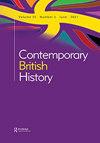一个运动,三个集群:英格兰和威尔士的国家公园运动,1929-1949
IF 0.6
2区 历史学
Q1 HISTORY
引用次数: 0
摘要
摘要英格兰和威尔士国家公园运动的历史在1949年通过了《国家公园和进入乡村法》而达到顶峰。然而,许多组成机构对新国家公园的行政安排感到不满。为了解释这种不一致性,本文试图将国家公园运动理解为一个松散附属的民间社会组织的异质网络。该运动由三个独立的集群组成,每个集群都有自己的国家公园方法、定义和期望。这些集群分别强调了规划和乡村保护、科学兴趣和自然保护以及露天娱乐等方面。他们第一次联合是在1929年,当时政府任命了第一个国家公园委员会。不同的核心组织在不同阶段领导了这场运动,形成了不同的联盟和委员会,重新定义了国家公园运动的特点及其在此过程中的公众和政治形象。科学和自然保护集群是1945年后放弃其他两个集群后最成功的集群。本文对英格兰和威尔士国家公园运动的历史进行了新的解释,这是一场极具争议和内部分歧的社会运动。本文章由计算机程序翻译,如有差异,请以英文原文为准。
One movement, three clusters: the national parks movement in England and Wales, 1929-1949
ABSTRACT The history of the national parks movement in England and Wales culminated in the passing of the National Parks and Access to the Countryside Act in 1949. Many constituent bodies were, however, dissatisfied with the administrative arrangements in the new National Parks. To explain this inconsistency, this article seeks to understand the national parks movement as a heterogenous network of loosely affiliated civil society organisations. The movement consisted of three separate clusters, each with its own approach to, definitions and expectations of national parks. These clusters emphasised the aspects of planning and rural preservation, scientific interests and nature preservation, and open-air recreation, respectively. They first joined forces in 1929, when the government appointed the first National Park Committee. Different core organisations led the movement at different stages, forming different coalitions and committees, re-defining the character of the national parks movement and its public and political profile in the process. The scientific and nature preservation cluster was the most successful after abandoning the other two clusters after 1945. This article offers a new interpretation of the history of the national parks movement in England and Wales as a highly contentious and internally divergent social movement.
求助全文
通过发布文献求助,成功后即可免费获取论文全文。
去求助
来源期刊

Contemporary British History
HISTORY-
CiteScore
1.40
自引率
14.30%
发文量
34
期刊介绍:
Contemporary British History offers innovative new research on any aspect of British history - foreign, Commonwealth, political, social, cultural or economic - dealing with the period since the First World War. The editors welcome work which involves cross-disciplinary insights, as the journal seeks to reflect the work of all those interested in the recent past in Britain, whatever their subject specialism. Work which places contemporary Britain within a comparative (whether historical or international) context is also encouraged. In addition to articles, the journal regularly features interviews and profiles, archive reports, and a substantial review section.
 求助内容:
求助内容: 应助结果提醒方式:
应助结果提醒方式:


